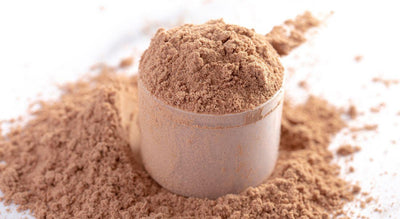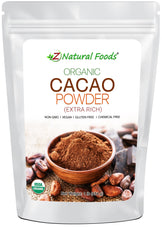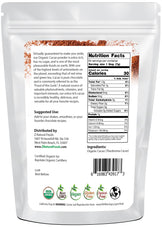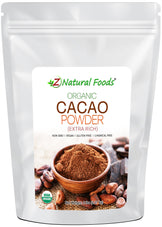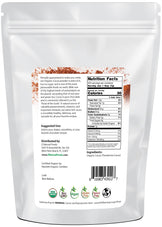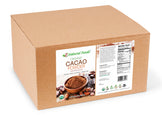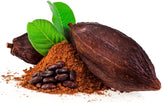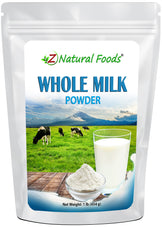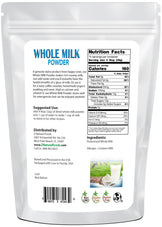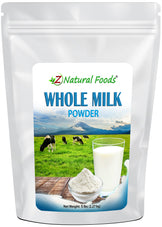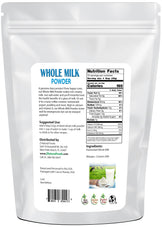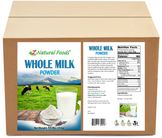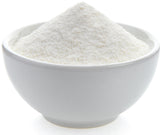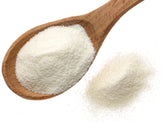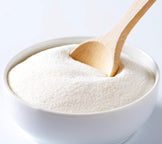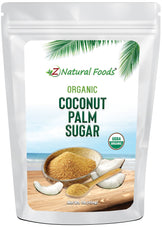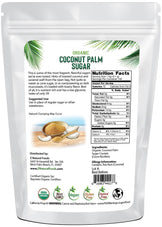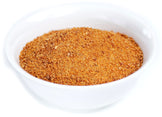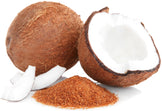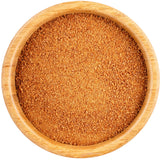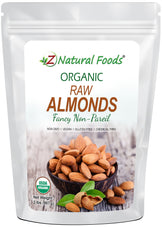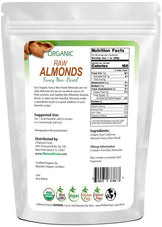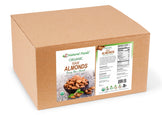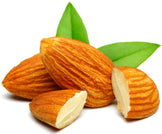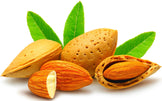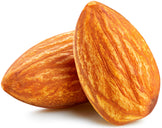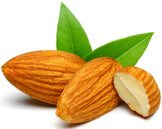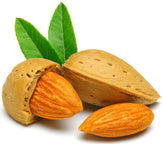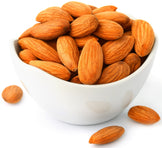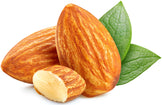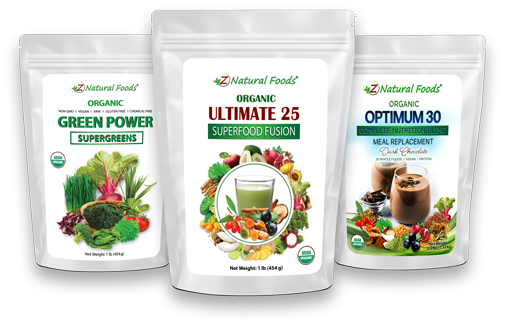Description
Description
Cacao may be one of Earth's most spectacular and nutritious foods.
Cacao beans are the rawest, most pure, and unadulterated form of what you may know as chocolate. Rich in the flavanols epicatechin and catechin, with procyanidins providing the majority of antioxidant activity.
Cacao also contains a treasure trove of essential minerals like calcium, magnesium, and potassium. Untreated, raw, organic cacao has been used for centuries as a wonderfully nourishing food. It is a premium product that has piqued the interest of health enthusiasts and culinary experts worldwide.
Today, we will answer five of the most frequently asked questions we get about our delicious cacao powder.
1) How is Pure Cacao Powder Different from Regular Cocoa Powder?
If you are one of these unfortunate individuals who has never had the pleasure of experiencing the rich, creamy, deliciously smooth texture and complex bitter flavor of pure cacao, you don’t know what you are missing. There are many choices and varieties of chocolate to satisfy any individual's desires and cravings.
Because terms like chocolate, cacao, and cocoa are commonly used interchangeably, this often misleads people to believe they are all the same food.
These three terms primarily have one thing in common: they all originally come from 100% pure cacao.
Ultimately, the end products are different foods providing different levels of nourishing properties and qualities. When creating a functional food product, nothing is more important than having ingredients in a form that supplies a whole food complex. A whole food complex represents and delivers all nutrients and phytonutrients in their natural synergistic state.
Following this rule assures the consumer will get quality nourishment in the most adaptable form to the body. Many cocoa products contain unnecessary extra ingredients, often because the primary components, milk, and cacao (often not even pure cacao), used in those products are such low quality.
Pure, high-quality Cacao has a rich and bitter flavor profile, often an acquired flavor to the untrained pallet. Only pure cacao provides the highest feel-good benefits falsely associated with chocolate products low in cacao solids.
Dutch and Alkalized Cacao: What Does it Mean?
You may have seen terms like Dutch or alkalized on a product label (you may know this as cocoa) and wonder what that means. They are the same process in which the cacao is washed in a potassium carbonate alkaline solution. The process is done to reduce bitterness and PH levels and to neutralize the acidity, which completely changes the flavor profile of the end product. Pure cacao has a pH of around 5-6 with a sharp, bitter flavor profile. Dutch-processed cocoa powder has a pH of 7 and a smooth, mellow, earthy flavor profile.
Today, people's pallets are changing because they eat more dark chocolate and eventually become lovers of natural pure cacao. It is universally agreed upon that the Dutch/alkalized process severely degrades mood and brain-supportive qualities.
2) What makes Z Natural Foods Pure Cacao Powder so Unique?
Cacao Butter: A nourishing fat
You may have heard the phrase “Extra Rich” when describing 100% cacao powder and wondered what it means. This phrase describes the level of nourishing fats in the end product. The higher quantity of nourishing fats gives the end product a noticeably richer and creamier texture and flavor. An overwhelming number of 100% pure cacao powders provide, on average, between 7% and 10% cacao butter, while extra-rich cacao offers over 20%.
Cacao bean contains approximately 50% fat, comprised of two saturated fatty acids(palmitic & stearic) and one mono-unsaturated fatty acid (oleic). In an article titled Cocoa and Chocolate in Human Health and Disease, the following facts are stated regarding the nourishing qualities of cacao fat:
- The oil in cacao, referred to as cocoa butter, is a mixture of monounsaturated and saturated fatty acids. In the monounsaturated fraction, oleic acid predominates, as it does in olive oil.
- Most saturated fatty acids in cacao are palmitic acid and stearic acid.
- Stearic acid is unusual because it does not elevate serum lipid levels to the same degree as other saturated fatty acids.
- Shorter-chain saturated fatty acids such as myristic acid (14:0) and palmitic acid (16:0) are associated with increased LDL and atherogenesis; stearic acid is not.
- Although the lipid content of chocolate is relatively high, one-third of the lipids in cocoa butter is stearic acid (18:0), which is believed to be non-atherogenic and to exert a neutral cholesterolemic response in humans.
The Key to the Flavor of Cacao
As stated earlier in this article, pure cacao has a complex, rich, and bitter flavor; for some, it is an acquired flavor.
But, only some people know that what primarily brings out this unique flavor is the vital fermentation process (which creates the final acidity) cacao must undergo to be edible and provide its nourishing qualities. Without this process, cacao would not have its unique flavor profile. To be clear, it is NOT the cacao beans that are fermented. Bacteria and enzymes created when the pod is cracked open ferment the white pulp surrounding the beans. The beans endure the effects and are transformed. While the length of time for this process may differ based on various factors, all cacao fermentation goes through an anaerobic and aerobic phase.
- Anaerobic Phase: Anaerobic conditions are defined as environments that lack oxygen. In cacao, the pulp surrounding the beans created a barrier preventing air from entering. Because the pulp is composed of water, sugar, and various acids, it creates ideal conditions for microorganisms to grow and thrive. The primary players are yeast, pulp enzymes, and lactic acid-producing bacteria. The enzymes break down the pulp, so there is more space for air to enter this process. Citric acid is also broken down, helping to increase the pH of fermentation. The combination of increased pH and airflow marks the beginning of this phase.
- Aerobic Phase: Aerobic conditions are environments that contain oxygen. With cacao, this phase involves mixing and moving the beans around, allowing for a more uniform fermenting process. This stage combines heat and diffusion of ethanol and acetic acid into the cacao beans, breaking down cell walls and producing an environment that develops the flavor precursors well known in cacao.
3) What are the Health Benefits of Pure Cacao Powder?
The experience of eating a nourishing form of cacao can be attributed to the synergy of unique compounds in this food.
1) Theobromine: The powerful Antioxidant
Theobromine, also known as caffeine’s cousin, is primarily found in cacao and tea. In one 50-gram serving of cacao, you might discover about 250 mg of theobromine. Featured in Frontiers in Pharmacology, researchers found that this fantastic compound offers remarkable antioxidant properties, could be considered a safe and natural alternative in supporting specific health ailments, and is a lead compound for possibly developing novel future therapies.
2) Phenylethylamine (PEA): The feel-good chemical
Phenylethylamine (PEA) is the actual love compound found in cacao. While PEA is in cacao only in small amounts, it carries a significant effect. Via stimulation of the nervous system, PEA may trigger the release of endorphins and potentiate the activity of dopamine associated with sexual arousal and pleasure. So, in other words, that restless feeling you have when you are in love is primarily due to PEA.
3) Resveratrol: The healthy aging compound
Resveratrol is one of the most well-studied compounds when discussing supporting a healthy aging process. On average, just under 200 mcg of resveratrol is present in cacao powder per 100 grams, which is half as much as in California red wine. While that is minimal, a little bit goes a long way.
Here are a few more reasons to use 100% pure cacao.
A Healthy Heart
Cacao may nourish many aspects of a healthy heart, and the research is quickly piling up. According to a Japanese study, the polyphenolic compounds (a class of antioxidants) found in cacao show great promise in possibly suppressing inflammation levels in the cardiovascular system.
Another study showed that consuming cacao flavanols may positively impact cardiometabolic function -- possibly affecting the heart and metabolic conditions like diabetes.
Nourish your brain with cacao:
Cacao may have even more happy effects. A study conducted by researchers at the University of Reading showed the positive effects of cacao on the pressure of blood flow to the brain, stating that “significant increases in regional perfusion across the brain were observed following consumption of the high-flavanol drink relative to the low flavanol drink, particularly in the anterior cingulate cortex and the central opercular cortex of the parietal lobe.” Therefore, it was concluded that these positive results from consuming cacao flavanols had provided evidence for possibly supporting cognitive performance.
Finally, a review of four studies discussing the effects of chocolate on cognitive function and mood concluded that two studies failed to demonstrate specific behavioral benefits but did show significant alterations to brain activation patterns. Two other studies did, however, report acute cognitive effects from consuming cacao polyphenols. Therefore, while it seems unclear whether the effects of chocolate on mood are due to the orosensory characteristics of chocolate or to the pharmacological actions of chocolate constituents, further exploration of the impact of chocolate on cognitive facilitation is recommended, along with substantiation of functional brain changes associated with the components of cacao.
4) Does Pure Cacao Powder Contain Caffeine?
Caffeine is the world's most widely used stimulating agent. It is well-known that caffeine stimulates the central nervous system. According to studies, it may also stimulate blood flow in the brain and increase the secretion of serotonin. Around 300 milligrams (mg) a day of caffeine has been shown to be a beneficial dose for most adults. Approximately a 50-gram serving of cacao contains about 35 mg of caffeine.
5) How Do You Incorporate Pure Cacao Powder into a Diet?
Z Natural Foods offers a variety of products to get your daily dose of cacao. Whether you are looking for 70% cacao wafers or 100% pure power or nibs, we have got you covered. If you are new to 100% cacao and your pallet is not ready for the hard stuff, using percentage-based dark chocolate products may be an excellent way to help your pallet transition into the authentic cacao flavor. The one thing that seems universally agreed upon is that products with 75-80% cacao solids should be your start-off point. If you have used pure cacao before, we suggest incorporating it into your daily cup of java. This match is made in heaven and can be done in several ways.
- Add a teaspoon to a tablespoon of the powder into the coffee and mix with a spoon.
- The other suggestion is (if you use a French press or percolator) to mix two tablespoons of cacao nibs with the ground coffee beans. When the coffee is ready, you will be in cacao heaven. With this method, you have made a quick cacao extract.
The best part of both methods is when you get to the bottom of your coffee mug, the surprise layer of cacao is waiting for you.
In conclusion, Cacao is one of nature's most divine gifts, and we hope you make it a part of your daily life to experience all the nourishing benefits it offers.
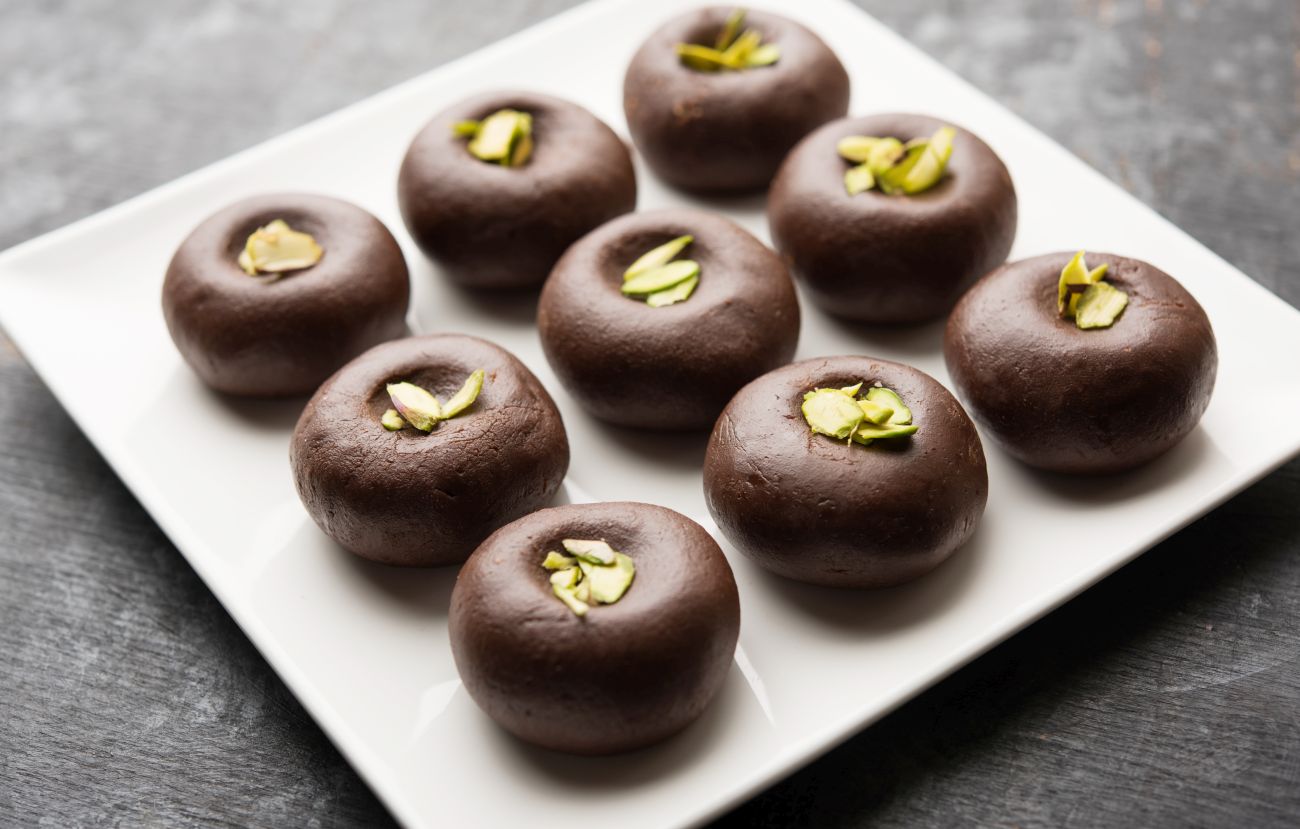
Quick Cacao Truffle Recipe;
- 2 tbsp. Coconut Oil
- 1 Cup Milk Powder
- 1/4 Cup Coconut Palm Sugar
- 1/4 Cup Milk
- 1/4 Cup Cacao powder
- 1 tsp Vanilla extract
- In a nonstick pan add coconut oil, when oil starts to melt, add milk powder, Palm sugar, and milk, and stir continuously on medium flame.
- When the mixture starts to thicken or separate from the pan (around 4 to 5 minutes), transfer to a bowl.
- Add cacao powder and vanilla flavor. Mix well and give a round ball or your favorite shapes.
- Note: you can add your favorite chopped nuts, or shredded coconut, or sprinkle on top.
For more information about our pure Extra Rich Organic Cacao Powder, go here:
Extra Rich Organic Cacao Powder
For more information about all of our Cacao products, go here.
